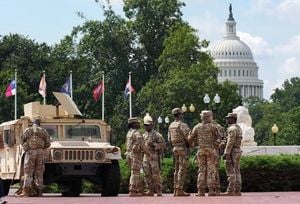On Tuesday, May 6, 2025, schools across the state of Sinaloa faced significant disruptions as multiple institutions suspended classes due to escalating violence in various municipalities. The Universidad Autónoma de Sinaloa announced that classes in several areas, including Mocorito, Salvador Alvarado, Angostura, Guasave, Sinaloa de Leyva, Navolato, Elota, and Escuinapa, would transition to virtual formats to ensure the safety of students and staff.
In Guasave, reports indicated that some schools sent students home due to notably low attendance, with many families opting to keep their children away from classrooms amid the unrest. This decision was echoed by the local Secretaria de Educación Pública y Cultura, which acknowledged the concerns of parents but stated that schools would remain technically open, albeit without receiving students.
The violence, which has been described as a "lunes negro" or "black Monday," included armed confrontations and the discovery of bodies in the streets. One particularly shocking incident involved the body of a kidnapped man found on a bridge, showing clear signs of violence. Additionally, six armed men were apprehended during a confrontation in Navolato, and the Mazatlán-Sinaloa highway was blocked with burning vehicles, severely disrupting traffic.
Specific incidents on May 5, 2025, included six homicides across Sinaloa—five in Culiacán and one in Salvador Alvarado—prompting four investigations by the Fiscalía General del Estado. The situation was further aggravated by reports of armed confrontations in Isla del Bosque and Teacapán, where residents reported hearing sustained gunfire.
In Escuinapa, the local government announced a complete suspension of classes for May 6, citing the need to protect students and staff following the violent events of the previous day. The mayor, Víctor Díaz Simental, stated that the decision was made to ensure the safety of the community and that the situation would be monitored closely. He confirmed that no fatalities were reported, although the motives behind the violence remained unclear.
Local authorities communicated through social media, urging residents to stay informed about potential changes regarding the resumption of classes on May 7. The violence on May 5 was concentrated in areas known for their vulnerability to crime, particularly along routes used for drug trafficking and other illicit activities.
As part of efforts to enhance security, a new base for the Guardia Nacional was inaugurated in Escuinapa on the Mexico 15 federal highway. This facility aims to bolster the presence of federal security forces in the region, with the mayor emphasizing the importance of collaboration between the Guardia Nacional and local authorities to restore peace.
On the morning of May 6, the Mazatlán-Culiacán highway was still obstructed due to the aftermath of the confrontations, with authorities working to clear the road. A body clad in tactical clothing was discovered at kilometer 101, further underscoring the severity of the situation. The Culiacán-El Dorado highway also experienced blockages, adding to the chaos.
Despite a call from the Secretaria de Educación Pública y Cultura urging schools to remain open, many institutions in Mocorito, Salvador Alvarado, and Guasave opted to suspend classes or switch to online formats. The Universidad Autónoma de Occidente, for instance, implemented virtual classes across its campuses, including in Culiacán.
The ongoing violence has raised significant concerns among the local population, particularly within the educational sector. Parents and educators are anxiously awaiting updates on when classes might resume, hoping for a return to normalcy amid the turmoil.
As the situation develops, the local government and educational authorities are committed to acting in coordination with state and federal agencies to address the violence and ensure the safety of the community. The commitment to safeguarding students and staff remains paramount, as families navigate these challenging circumstances.
In summary, the violence in Sinaloa has led to widespread school closures and a shift to online education as authorities prioritize safety. With multiple investigations underway and a heightened security presence, residents are left grappling with the impact of these violent events on their daily lives and the future of education in the region.






